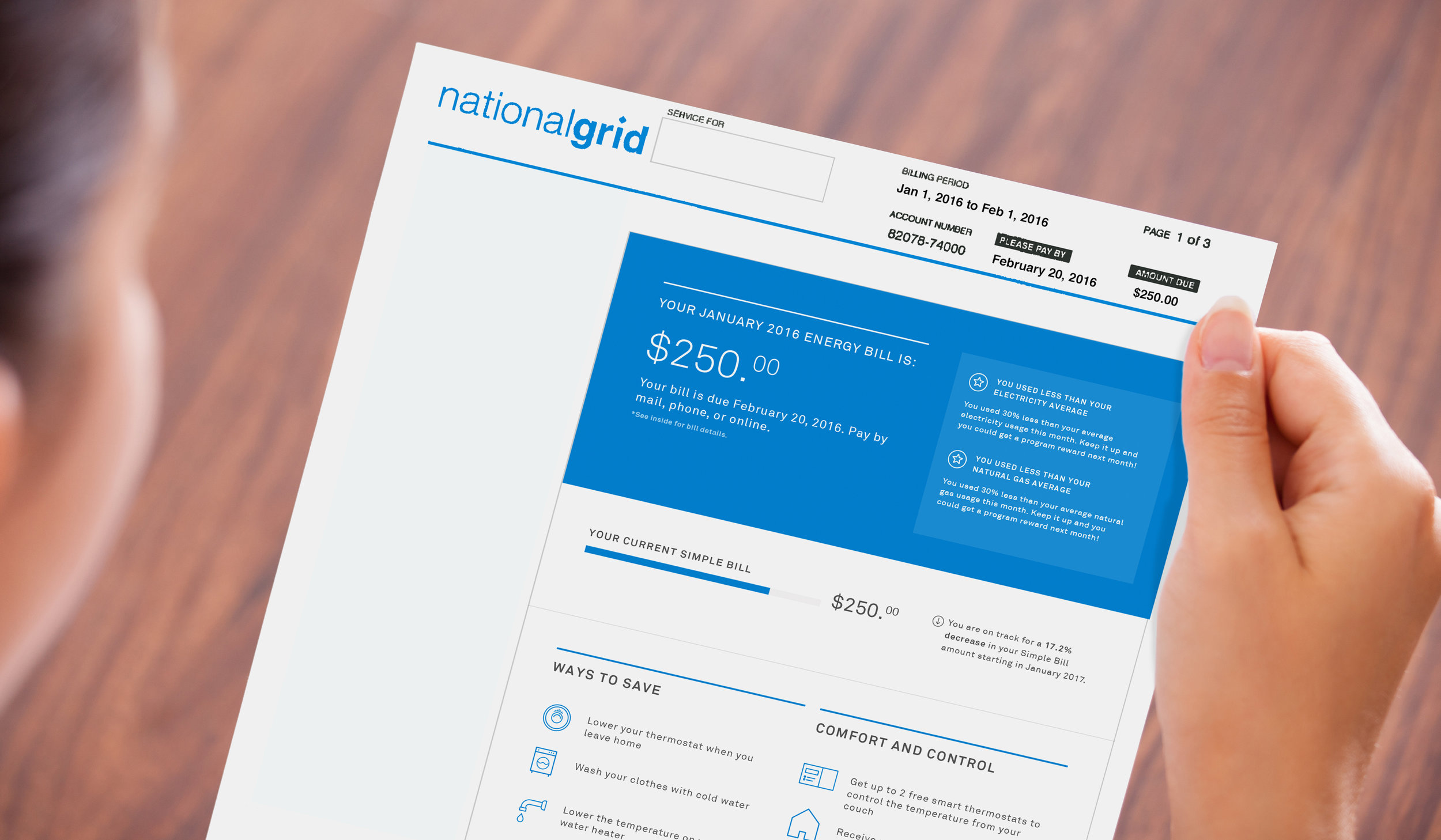
National Grid Simple Bill
INFORMATION DESIGN
National Grid Simple Bill
A redesigned National Grid bill for the future of smart utilities

In 2016, National Grid began a new smart utility pilot program called National Grid Smart Energy Solutions in Clifton Park, New York.
The pilot introduced automated energy systems for residences and small businesses in the area, allowing customers to actively monitor and manage their energy consumption. As part of the pilot, National Grid installed smart electricity and natural gas meters for their 15,000 Clifton Park customers. The structure of the new pilot worked somewhat like a data plan for a cellphone: customers paid a set amount each month for a set amount of utility usage, and were charged for any energy overages on their bill. My job, alongside energy partner Sealed Inc., was to redesign a better, simpler utility bill for the pilot program (called the “Simple Bill”) and to highlight the predictability and transparency of this new system.
Client
National Grid
Role
UX & Information Designer
DELIVERABLES
Sketches, Bill Designs
TEAM PARTNER
Sealed Inc.
YEAR
2015

Customer Feedback and Priorities
Customer interviews informed all design decisions around structure and information hierarchy on the Simple Bill. In these interviews, Clifton Park customers provided useful information about what didn’t work for them in their usual utility bills and what was important to them in the new pilot program. The following priorities and feedback were most informative for the design process:
- The amount owed is the most important piece of information on the bill.
- Customers want everything to feel clear and transparent, and want a clear visualization of why they owe what they do.
- The visual of what people are saving is not as important to them.
- Customers do not care too much about the complexity of their energy bill and the full breakdown. Units of energy can also be confusing.
- The information that matters most to people is whether or not they’ve gone over or under on their bill.

SKETCHING
The first step in the process of translating customer needs into a design for the printed bill was to sketch many different iterations. The sketches here were almost like wireframes, and through them, I created a blueprint of the most important pieces of information. Once I had a clearer sense of all the information that needed to go on the bill, I was able to connect related pieces of information (for example, energy overage and amount due) and rank information in terms of importance.

VISUAL DESIGN
The Simple Bill was designed as a wrapper for the original National Grid Bill, which could not be abandoned due to regulatory requirements. It functions as a condensed summary with more information for customers inside.
The structure of the Simple Bill is broken down into three main sections:
- The top section gives the customer immediate feedback on how they’re doing, and contains the most important information such as how much they owe and their energy usage
- The middle section provides medium-term estimates on the price of their bill based on current usage
- The bottom section suggests different ways to save in the long-term, and is customized depending on the patterns in their usage

In the top section, the customer owes $275 on their bill. They’ve gone over on their natural gas usage, and under on electricity usage. It doesn’t say how much they’ve used, just whether they’ve gone over or under.

In the middle section, the customer can see the price breakdown of their bill. The plan costs a flat $236, but since they’ve gone over on natural gas usage, they owe an extra $39. This section clearly illustrates the relationship between usage and amount due. There’s also a small note to the customer that predicts their future Simple Bill cost.
The last section provides customers with information about how they can control their energy usage in the long-term. In addition to saving money, comfort and control are huge motivators for customers and are called out specifically in the last section.
